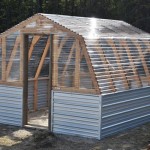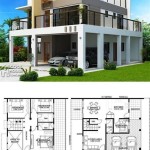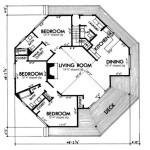Piling house plans are architectural designs that specify the use of piles as the foundation of a building. Piles are long, slender structural elements driven into the ground to transfer the weight of the structure to a more stable soil layer beneath the surface. This type of foundation is commonly utilized in areas with weak or unstable soils, such as swamps or areas prone to flooding.
Piling house plans encompass various details, including pile type, size, spacing, and depth, as well as the design of the superstructure to be supported. Engineers meticulously calculate the number and arrangement of piles required to ensure the stability and safety of the building under varying load conditions.
These plans provide a comprehensive blueprint for the construction of a piling foundation, ensuring that the building can withstand the forces exerted by the soil, wind, and other environmental factors. By following these plans, builders can create durable and long-lasting structures, even in challenging soil conditions.
Piling house plans are essential for the design and construction of buildings on unstable or weak soils. Here are ten important points to consider:
- Pile type
- Pile size
- Pile spacing
- Pile depth
- Soil conditions
- Structural design
- Load calculations
- Building codes
- Engineer’s approval
- Construction supervision
By carefully considering these factors, engineers and builders can create piling house plans that result in safe and durable structures.
Pile type
The type of pile used in a piling house plan depends on several factors, including the soil conditions at the building site, the weight of the structure, and the desired level of structural support. The most common types of piles used in piling house plans include:
Timber piles
Timber piles are made from wood, typically treated with preservatives to protect against rot and decay. They are relatively inexpensive and easy to install, but they are not as strong as other types of piles and may not be suitable for heavy loads or unstable soil conditions.
Concrete piles
Concrete piles are made from reinforced concrete and are more durable and stronger than timber piles. They are also less susceptible to rot and decay, making them a good choice for use in areas with high moisture levels or aggressive soil conditions. However, concrete piles are more expensive and difficult to install than timber piles.
Steel piles
Steel piles are made from steel and are the strongest and most durable type of pile. They are also the most expensive and difficult to install, but they may be necessary for very heavy loads or extremely unstable soil conditions.
Composite piles
Composite piles are made from a combination of materials, such as steel and concrete. They offer a balance of strength, durability, and cost-effectiveness, making them a good choice for a wide range of applications.
The type of pile used in a piling house plan should be carefully selected by a qualified engineer based on the specific requirements of the project.
Pile size
The size of the piles used in a piling house plan is determined by several factors, including the weight of the structure, the soil conditions, and the type of pile being used. Piles are typically sized based on their diameter and length.
The diameter of a pile is important because it determines the amount of load that the pile can carry. Piles with larger diameters can carry more load than piles with smaller diameters. The length of a pile is important because it determines the depth to which the pile is driven into the ground. Piles that are driven deeper into the ground can carry more load than piles that are driven to a shallower depth.
The soil conditions at the building site also play a role in determining the size of the piles that are needed. Piles that are driven into soft or loose soil will need to be larger in diameter and longer in length than piles that are driven into hard or dense soil. This is because soft or loose soil provides less support for the piles, so they need to be larger and longer to carry the same amount of load.
Finally, the type of pile being used also affects the size of the pile that is needed. Timber piles, for example, are typically larger in diameter than concrete piles because they are not as strong. Steel piles, on the other hand, are typically smaller in diameter than concrete piles because they are stronger.
The size of the piles used in a piling house plan should be carefully selected by a qualified engineer based on the specific requirements of the project.
Pile spacing
Pile spacing is the distance between the piles in a piling house plan. It is an important factor to consider because it affects the overall stability and load-bearing capacity of the foundation.
There are several factors that influence the spacing of piles in a piling house plan, including:
- Soil conditions: The soil conditions at the building site will affect the spacing of the piles. In soft or loose soil, the piles will need to be spaced closer together to provide adequate support for the structure. In hard or dense soil, the piles can be spaced farther apart.
- Pile type: The type of pile being used will also affect the spacing of the piles. Timber piles, for example, are typically spaced closer together than concrete piles because they are not as strong. Steel piles, on the other hand, can be spaced farther apart because they are stronger.
- Structural design: The structural design of the building will also affect the spacing of the piles. Buildings with heavier loads will require piles that are spaced closer together to provide adequate support. Buildings with lighter loads can have piles that are spaced farther apart.
- Building codes: Building codes may also specify the minimum spacing requirements for piles in a piling house plan. These codes are in place to ensure the safety and stability of buildings.
The spacing of the piles in a piling house plan should be carefully selected by a qualified engineer based on the specific requirements of the project.
Pile depth
Pile depth is the depth to which the piles are driven into the ground. It is an important factor to consider because it affects the overall stability and load-bearing capacity of the foundation.
There are several factors that influence the depth of the piles in a piling house plan, including:
- Soil conditions: The soil conditions at the building site will affect the depth of the piles. In soft or loose soil, the piles will need to be driven deeper to reach a more stable soil layer. In hard or dense soil, the piles can be driven to a shallower depth.
- Pile type: The type of pile being used will also affect the depth of the piles. Timber piles, for example, are typically driven deeper than concrete piles because they are not as strong. Steel piles, on the other hand, can be driven to a shallower depth because they are stronger.
- Structural design: The structural design of the building will also affect the depth of the piles. Buildings with heavier loads will require piles that are driven deeper to provide adequate support. Buildings with lighter loads can have piles that are driven to a shallower depth.
- Building codes: Building codes may also specify the minimum depth requirements for piles in a piling house plan. These codes are in place to ensure the safety and stability of buildings.
The depth of the piles in a piling house plan should be carefully selected by a qualified engineer based on the specific requirements of the project.
In addition to the factors listed above, the depth of the piles may also be affected by the presence of groundwater or other. In areas with high groundwater levels, the piles may need to be driven deeper to reach a stable soil layer below the water table.
The depth of the piles is an important factor to consider in the design of a piling house plan. By carefully selecting the depth of the piles, engineers can ensure that the foundation is stable and can support the weight of the structure.
Soil conditions
Soil conditions play a critical role in the design of piling house plans. The type of soil, its density, and its moisture content all affect the depth and spacing of the piles.
Soil type
The type of soil at the building site will affect the type of piles that are used and the depth to which they are driven. For example, timber piles are typically used in soft or loose soils, while concrete piles are used in hard or dense soils. Steel piles can be used in a variety of soil conditions.
Soil density
The density of the soil affects the load-bearing capacity of the piles. Piles driven into dense soil will be able to support more weight than piles driven into loose soil. This is because dense soil provides more support for the piles.
Soil moisture content
The moisture content of the soil can also affect the load-bearing capacity of the piles. Piles driven into wet soil may be more likely to settle or fail than piles driven into dry soil. This is because wet soil is less stable than dry soil.
In addition to the factors listed above, the soil conditions at the building site may also be affected by the presence of groundwater or other factors. In areas with high groundwater levels, the piles may need to be driven deeper to reach a stable soil layer below the water table.
Geotechnical engineers typically conduct a soil investigation at the building site to assess the soil conditions and to determine the appropriate type and depth of piles for the piling house plan.
Structural design
The structural design of a building supported by a piling foundation is critical to ensure its stability and safety. The structural engineer must consider several factors when designing the building, including the weight of the structure, the spacing and depth of the piles, and the soil conditions at the building site.
- Load calculations
The structural engineer must calculate the total weight of the building, including the weight of the structure itself, the weight of the occupants and their belongings, and the weight of any equipment or machinery that will be used in the building. Once the total weight of the building has been calculated, the engineer can determine the number and size of piles that are needed to support the weight of the building.
- Pile spacing and depth
The spacing and depth of the piles must be carefully determined to ensure that the piles can support the weight of the building and that the building is stable. The spacing of the piles will depend on the type of soil at the building site and the weight of the building. The depth of the piles will depend on the type of soil and the depth to which the piles can be driven into the ground.
- Foundation design
The structural engineer must also design the foundation of the building. The foundation will transfer the weight of the building to the piles. The foundation must be strong enough to support the weight of the building and must be designed to prevent the building from settling or shifting.
- Wind and seismic loads
The structural engineer must also consider the wind and seismic loads that the building may be subjected to. Wind and seismic loads can cause the building to sway or vibrate, which can put stress on the piles and the foundation. The structural engineer must design the building to withstand these loads and to prevent the building from collapsing.
The structural design of a piling house plan is a complex process that requires careful consideration of several factors. By carefully designing the structural system, the engineer can ensure that the building is safe and stable.
Load calculations
Load calculations are an essential part of the structural design of a piling house plan. The structural engineer must calculate the total weight of the building, including the weight of the structure itself, the weight of the occupants and their belongings, and the weight of any equipment or machinery that will be used in the building. Once the total weight of the building has been calculated, the engineer can determine the number and size of piles that are needed to support the weight of the building.
- Dead loads
Dead loads are the permanent loads that are always present on a building. These loads include the weight of the building itself, the weight of the occupants and their belongings, and the weight of any fixed equipment or machinery. Dead loads are relatively easy to calculate because they are not affected by external factors such as wind or snow.
- Live loads
Live loads are the variable loads that can change over time. These loads include the weight of people, furniture, and other movable objects. Live loads are more difficult to calculate than dead loads because they can vary depending on the use of the building. For example, the live load on a residential building will be different than the live load on a commercial building.
- Wind loads
Wind loads are the forces that are exerted on a building by wind. Wind loads can be significant, especially in areas that are prone to high winds. The structural engineer must calculate the wind loads that the building will be subjected to and design the building to withstand these loads.
- Seismic loads
Seismic loads are the forces that are exerted on a building by an earthquake. Seismic loads can be significant, especially in areas that are prone to earthquakes. The structural engineer must calculate the seismic loads that the building will be subjected to and design the building to withstand these loads.
Load calculations are a complex process that requires careful consideration of several factors. By carefully calculating the loads that the building will be subjected to, the structural engineer can ensure that the building is safe and stable.
Building codes
Building codes are regulations that govern the design, construction, and maintenance of buildings. Building codes are in place to ensure that buildings are safe and habitable. Building codes may also include specific requirements for piling house plans.
One of the most important building codes that applies to piling house plans is the International Building Code (IBC). The IBC is a model code that has been adopted by most states in the United States. The IBC includes requirements for the design and construction of foundations, including piling foundations. The IBC requires that piling foundations be designed by a qualified engineer and that the piles be driven to a depth that is sufficient to support the weight of the building and to resist uplift forces.
In addition to the IBC, there may be other building codes that apply to piling house plans. These codes may vary from state to state and from municipality to municipality. It is important to check with the local building department to determine which building codes apply to your project.
When designing a piling house plan, it is important to comply with all applicable building codes. Building codes are in place to ensure that buildings are safe and habitable. By complying with building codes, you can help to ensure that your building is safe for your family and your community.
Building codes are essential for ensuring the safety and stability of buildings. By complying with building codes, engineers and builders can help to protect the public from unsafe buildings.
Engineer’s approval
Engineer’s approval is a critical step in the process of designing and constructing a piling house plan. A qualified engineer must review and approve the plans to ensure that they meet all applicable building codes and standards. The engineer will also check to make sure that the plans are appropriate for the specific soil conditions at the building site.
The engineer’s approval process typically involves the following steps:
- The engineer reviews the plans and calculations submitted by the designer.
- The engineer checks to make sure that the plans meet all applicable building codes and standards.
- The engineer checks to make sure that the plans are appropriate for the specific soil conditions at the building site.
- The engineer may require the designer to make changes to the plans before they are approved.
- Once the engineer is satisfied with the plans, they will sign and seal them.
The engineer’s approval is an important step in the process of designing and constructing a piling house plan. By obtaining the engineer’s approval, you can help to ensure that your building is safe and habitable.
In addition to the engineer’s approval, it is also important to obtain a building permit from the local building department. The building permit will ensure that your project complies with all applicable building codes and standards.
Construction supervision
Construction supervision is an important part of the process of building a piling house. A qualified engineer or inspector should be on site to oversee the construction process and to ensure that the piling house plan is being followed. The construction supervisor will also check to make sure that the piling foundation is being installed correctly and that the building is being constructed in accordance with all applicable building codes and standards.
The construction supervisor will typically perform the following tasks:
- Review the piling house plan and make sure that it is being followed.
- Inspect the piling foundation to make sure that it is being installed correctly.
- Inspect the building to make sure that it is being constructed in accordance with all applicable building codes and standards.
- Make sure that the building is safe for occupancy.
Construction supervision is an important step in the process of building a piling house. By having a qualified engineer or inspector on site to oversee the construction process, you can help to ensure that your building is safe and habitable.
In addition to the construction supervisor, it is also important to have a qualified engineer or inspector perform a final inspection of the building once it is complete. The final inspection will ensure that the building is safe for occupancy and that it complies with all applicable building codes and standards.










Related Posts








